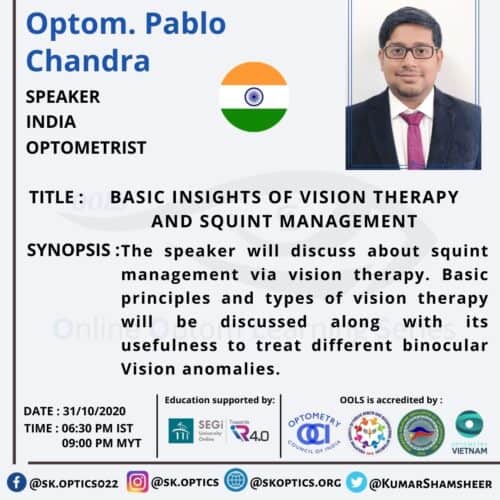
Mr. Pablo Chandra, a practicing optometrist and an educator begins by explaining what is vision therapy as accepted internationally by different expert groups. He elaborates on the difference between vision therapy and squint therapy. Vision therapy ideally encompasses squint therapy and is used to treat many other conditions.
Initially, Mr. Chandra starts by focusing on when can an eyecare practitioner use vision therapy and listing the conditions where vision therapy is primarily used. He mentions the need for vision therapy especially to reduce eye strain and other asthenopic symptoms. He talks about the different types of vision therapy
- Active vision therapy
- Passive vision therapy
- Home based vision therapy
- Office based vision therapy
We discuss depth how can a practitioner implement proper vision therapy mechanism and how can practitioners can succeed in their vision therapy practice. We work out the details of a vision therapy visit by discussing the scheduling time, suggestions for training different age groups and different conditions used for treatment as listed below.
- Accomodative Therapy
- Hart chart
- Lose minus lens rock test
- Lens flipper
- Split pupil rock test
- Fusional Vision Therapy
- Anaglyph and transaglyphs
- Vectograms
- Cheri scope
- Aperture rule
- Life savers card
Lastly, we discuss how one should manage amblyopia using vision therapy. The session ends with a Q and A session for the live audience.
